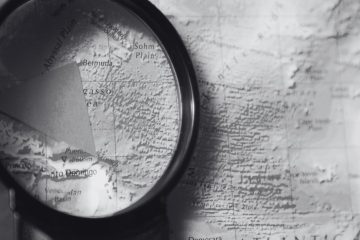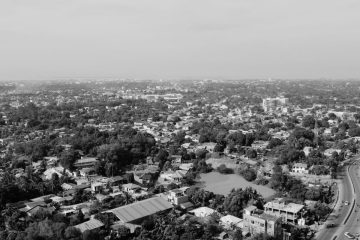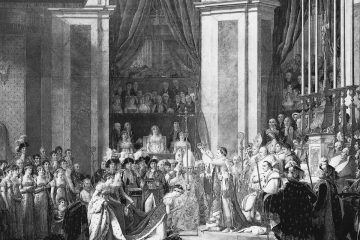What Happened On June 2nd?
On June 2, 1953, millions watched as Queen Elizabeth II was crowned in Westminster Abbey, officially making her the queen. This date officially marked her reign as the longest-reigning known female monarch in world history.
Preparation Efforts
Months before the coronation, craftsmen and artists transformed Westminster Abbey to host the ceremony. They ensured every detail reflected the occasion’s importance. Workers constructed special seating for over 8,000 guests, including heads of state, dignitaries, and representatives from across the Commonwealth.
Televised Ceremony
The coronation became the first major event to be televised, allowing millions worldwide to watch the ceremony from their homes. Queen Elizabeth II supported this decision, making the monarchy more accessible to the public.
The Procession Route
On the morning of June 2, cheering crowds lined the streets of London as the coronation procession made its way to Westminster Abbey. Queen Elizabeth II traveled in the Gold State Coach, a vehicle used for coronations since 1821. Planners meticulously mapped the route to allow as many people as possible to witness the event.
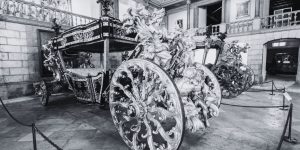
Military & Commonwealth Presence
The procession included thousands of military personnel, representatives from the Commonwealth, and members of the royal family. This grand display emphasized the event’s importance and the unity of the British Empire and Commonwealth.
Ceremony Details
Inside Westminster Abbey, the ceremony began with a procession of clergy, choirboys, and officials, followed by Queen Elizabeth II. Wearing a white satin gown embroidered with symbols of the Commonwealth, she appeared graceful and dignified. The Archbishop of Canterbury, Geoffrey Fisher, conducted the ceremony.
The coronation service, steeped in tradition, dated back over a thousand years. It included the anointing of the queen with holy oil, the presentation of regalia, and the taking of the coronation oath. In a special ceremony at the Chapel Royal at St. James’s Palace, officials consecrated the holy oil used for the anointing.
Crowning Moment
The highlight of the ceremony came when the Archbishop of Canterbury placed St. Edward’s Crown on the queen’s head. Made of solid gold and adorned with precious stones, the crown symbolizes the monarch’s sovereignty. As the crown was placed on her head, the congregation shouted, “God save the Queen,” and the abbey bells rang out in celebration.
Royal Composure
The crown, weighing nearly five pounds, required Queen Elizabeth II to practice wearing it comfortably. Her composure and poise during the ceremony reflected her dedication and preparation.
Post-Coronation Procession
Following the coronation, Queen Elizabeth II and the royal family returned to Buckingham Palace in a grand procession. Jubilant crowds once again filled the streets, celebrating their new monarch. At the palace, the queen appeared on the balcony with her family, waving to the cheering masses below.
The day concluded with a coronation banquet at Buckingham Palace, attended by heads of state and dignitaries from around the world.
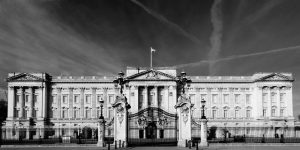
Televised Impact
The coronation of Queen Elizabeth II was not just a national event but a global spectacle. For the first time, a coronation was broadcast on television, reaching an estimated 27 million people in the United Kingdom alone and millions more worldwide. This historic broadcast brought the ceremony into homes around the world, enhancing the public’s connection to the royal family.
Young Monarch
Queen Elizabeth II was just 25 years old when she ascended the throne, following the sudden death of her father, King George VI. She had been on a tour of Kenya when she received the news of his passing, making her the first British monarch since George I to be outside the country at the moment of succession.
Despite her young age, Queen Elizabeth II had prepared well for her role. She received extensive education in history, law, and constitutional matters, and regularly attended meetings of the Privy Council. Her early exposure to the workings of the monarchy equipped her to handle the immense responsibilities that came with the crown.
Linguistic Skills
The queen is proficient in languages. In addition to her native English, Queen Elizabeth II is fluent in French, often conducting diplomatic engagements and speeches in the language. Her linguistic skills have greatly aided her in building rapport with international leaders and dignitaries.
The queen has a unique way of signaling to her staff during public engagements. By shifting her handbag from one arm to the other, she discreetly communicates her desire to end a conversation or move on to the next part of the event.
Remarkable Longevity
Queen Elizabeth II holds the distinction of being the longest-living and longest-reigning British monarch in history. Born on April 21, 1926, she lived to be 96 years old and reigned for 70 years. Her remarkable longevity and dedication allowed her to witness and adapt to immense changes over the decades, making her an enduring symbol of continuity and stability for the nation.


